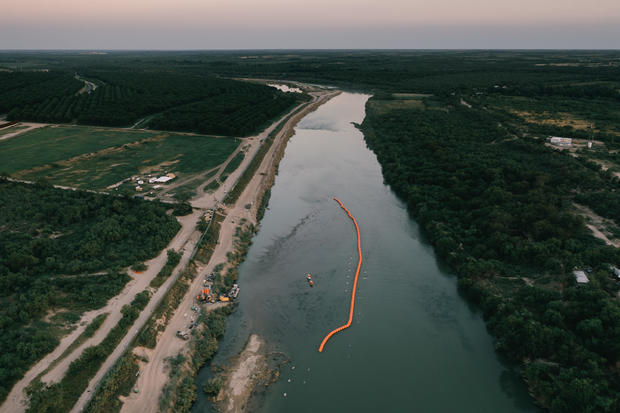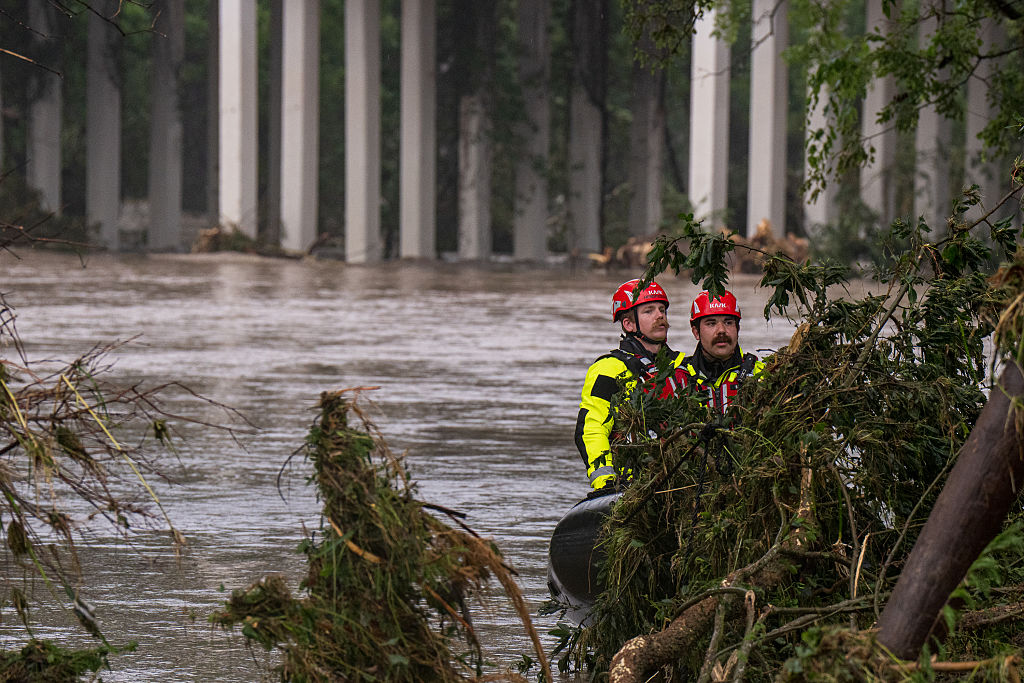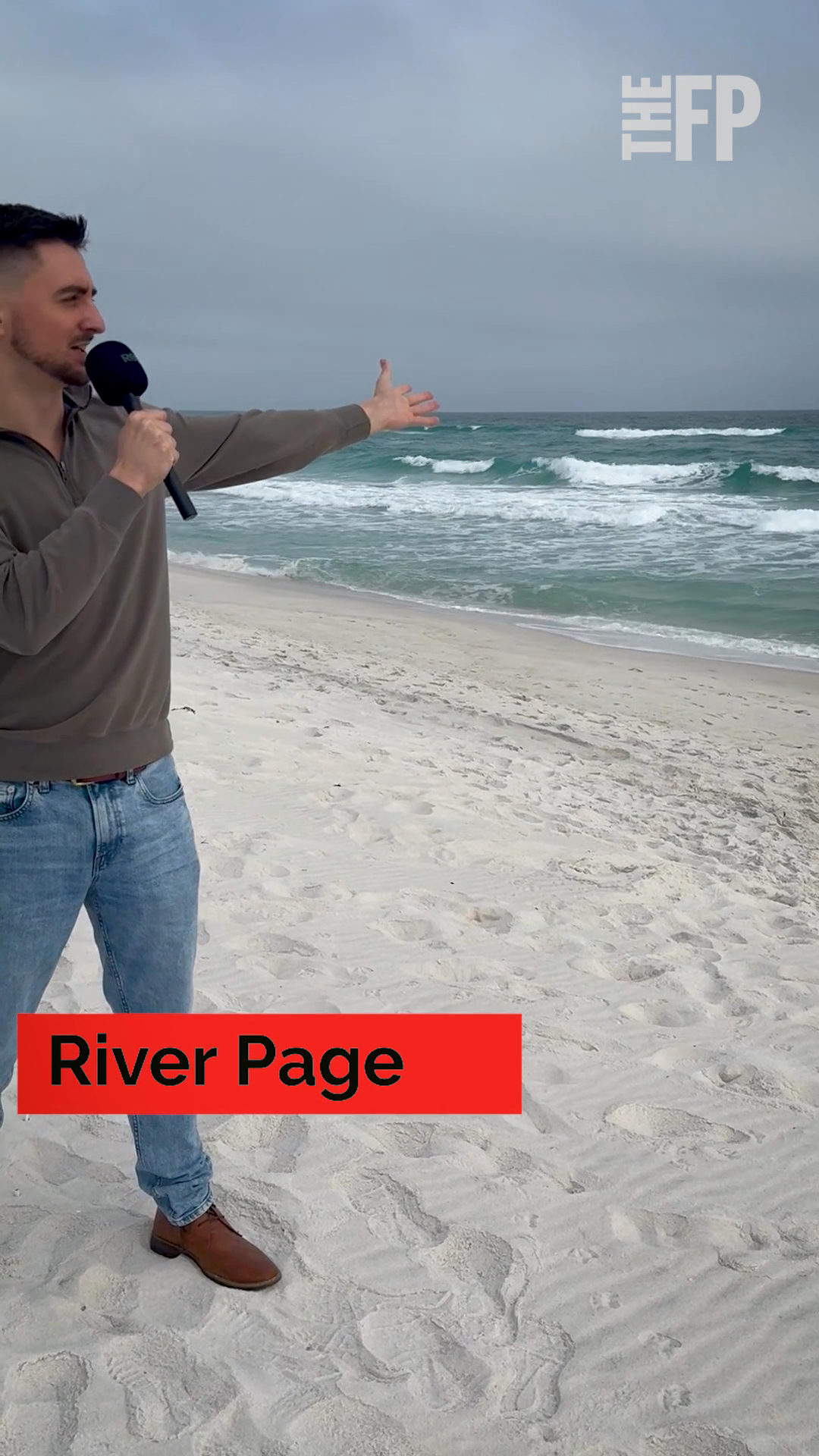Mexico recovers 2 bodies from the Rio Grande, including 1 found near floating barrier that Texas installed
Mexico City — Mexican authorities have recovered two bodies in the Rio Grande, including one that was spotted along the floating barrier that Texas Gov. Greg Abbott had installed recently in the Rio Grande, across from Eagle Pass, Texas.
Mexico's Foreign Relations Department reported Wednesday that a body had been found along the floating barrier. The Coahuila state prosecutor's office later told local media outlets that the two bodies were recovered and that the process of identification was underway.
Mexico's migration agency on Thursday confirmed one victim was from Honduras and the other was Mexican. Neither victim was a minor, the agency said. The Honduran government will assist in the repatriation process, Wilson Paz, general director of Honduras' migrant protection service, said Thursday.
Mexico's Foreign Relations Department initially said one body was found along the barrier, then hours later said a second body was found about 3 miles upriver, away from the area of the buoys. The cause of death was unknown in both cases.
Mexican officials condemned the barrier's installment in two separate notes reporting that bodies were found in the Rio Grande. But Steve McCraw, director of the Texas Department of Public Safety, said preliminary information indicates that the first person found dead had "drowned upstream from the marine barrier and floated into the buoys."
"There are personnel posted at the marine barrier at all times in case any migrants try to cross," McCraw said in a statement by the public safety department obtained by CBS News.
Lt. Chris Olivarez, a spokesperson for Texas DPS, said in the same statement that the department "received a report of a possible drowning victim floating upstream from the marine barrier" on Wednesday and notified U.S. Customs and Border Protection and the Mexican consulate.
"Later that day a body was discovered at the marine barrier," Olivarez said.
Many have warned about the danger the barrier poses because it's designed to make it more difficult for migrants to climb over or swim under it.
A Texas state trooper raised internal concerns about the barrier diverting migrants, including children, into parts of the Rio Grande where they're more likely to drown.
The barrier was installed in July and stretches roughly the length of three soccer fields.
The department said Mexico had warned about the risks posed by the bright orange, wrecking ball-sized buoys on the Rio Grande. It also claimed the barrier violates treaties regarding the use of the river and violates Mexico's sovereignty.
"We made clear our concern about the impact on migrants' safety and human rights that these state policies would have," the department said in a statement. Mexico said it was officials from the Texas Department of Public Safety that notified Mexico's consulate in Eagle Pass Tuesday about the body.
The U.S. Justice Department is suing Abbott over the floating barrier. The lawsuit asks a court to force Texas to remove it. The Biden administration says the barrier raises humanitarian and environmental concerns.
The buoys are the latest escalation of Texas' border security operation that also includes razor-wire fencing and arresting migrants on trespassing charges.
The state trooper's internal complaint raised concerns about Texas' border initiative, known as Operation Lone Star. The trooper described migrants being cut by the razor wire, and directives to push families back into the Rio Grande.
Migrant drownings occur regularly on the Rio Grande. Over the Fourth of July weekend, before the buoys were installed, four people, including an infant, drowned in the river near Eagle Pass.
A Biden administration official told CBS News last month that the floating barriers have interfered with Border Patrol efforts to patrol the river and process migrants who reach U.S. soil. In one week, the official added, Border Patrol encountered dozens of injured or drowned migrants, including babies.
Once migrants are on the U.S. side of the border which, in Texas, falls in the middle of the Rio Grande, federal law requires Border Patrol officials to process them and decide whether they should be deported, transferred to another agency, detained or released. The law also requires federal officials to review the asylum claims of those who ask for refuge. State officials aren't authorized to enforce these laws.
Over the past two years, Abbott, a Republican, has engaged in a high-profile feud with President Biden, a Democrat, over how the federal government has handled a historic migration wave along the U.S.-Mexico border, where Border Patrol recorded an all-time high in apprehensions in 2022.
Unlawful entries along the southern border in June plunged to the lowest level since the start of the Biden administration, defying predictions that the end of a pandemic-era order known as Title 42 would fuel a massive spike in unauthorized migration to the U.S.
Biden administration officials have attributed the sharp reduction in illegal border crossings to its unprecedented efforts to expand opportunities for migrants to enter the U.S. with the government's permission, as well as its stricter asylum rules for those who don't apply for these programs.
"Governor Abbott's dangerous and unlawful actions are undermining our effective border enforcement plan and making it hard for CBP to do their jobs of securing the border," White House spokesperson Abdullah Hasan said in a statement. "The governor's actions are cruel and putting both migrants and border agents in danger."






